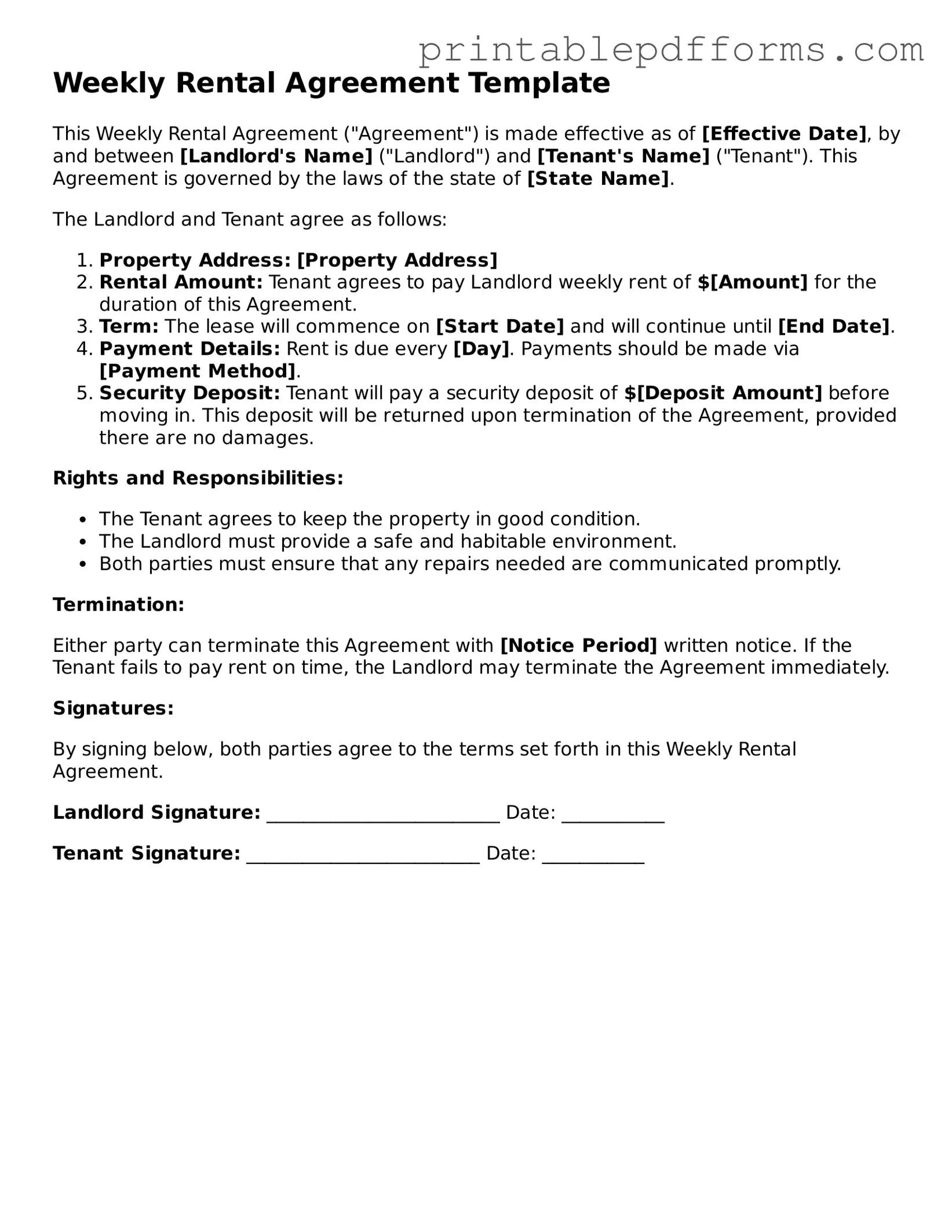Weekly Rental Agreement Template
This Weekly Rental Agreement ("Agreement") is made effective as of [Effective Date], by and between [Landlord's Name] ("Landlord") and [Tenant's Name] ("Tenant"). This Agreement is governed by the laws of the state of [State Name].
The Landlord and Tenant agree as follows:
- Property Address: [Property Address]
- Rental Amount: Tenant agrees to pay Landlord weekly rent of $[Amount] for the duration of this Agreement.
- Term: The lease will commence on [Start Date] and will continue until [End Date].
- Payment Details: Rent is due every [Day]. Payments should be made via [Payment Method].
- Security Deposit: Tenant will pay a security deposit of $[Deposit Amount] before moving in. This deposit will be returned upon termination of the Agreement, provided there are no damages.
Rights and Responsibilities:
- The Tenant agrees to keep the property in good condition.
- The Landlord must provide a safe and habitable environment.
- Both parties must ensure that any repairs needed are communicated promptly.
Termination:
Either party can terminate this Agreement with [Notice Period] written notice. If the Tenant fails to pay rent on time, the Landlord may terminate the Agreement immediately.
Signatures:
By signing below, both parties agree to the terms set forth in this Weekly Rental Agreement.
Landlord Signature: _________________________ Date: ___________
Tenant Signature: _________________________ Date: ___________
